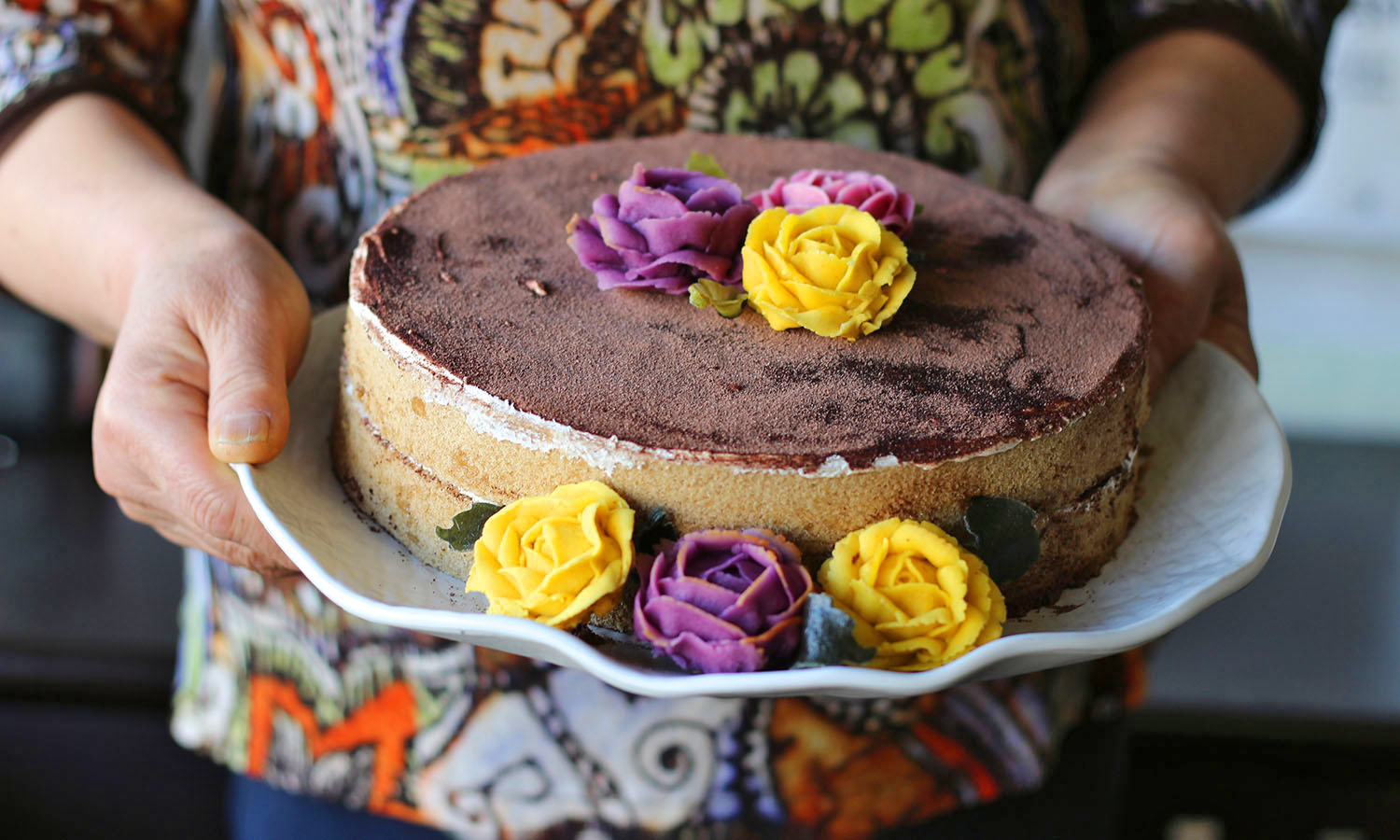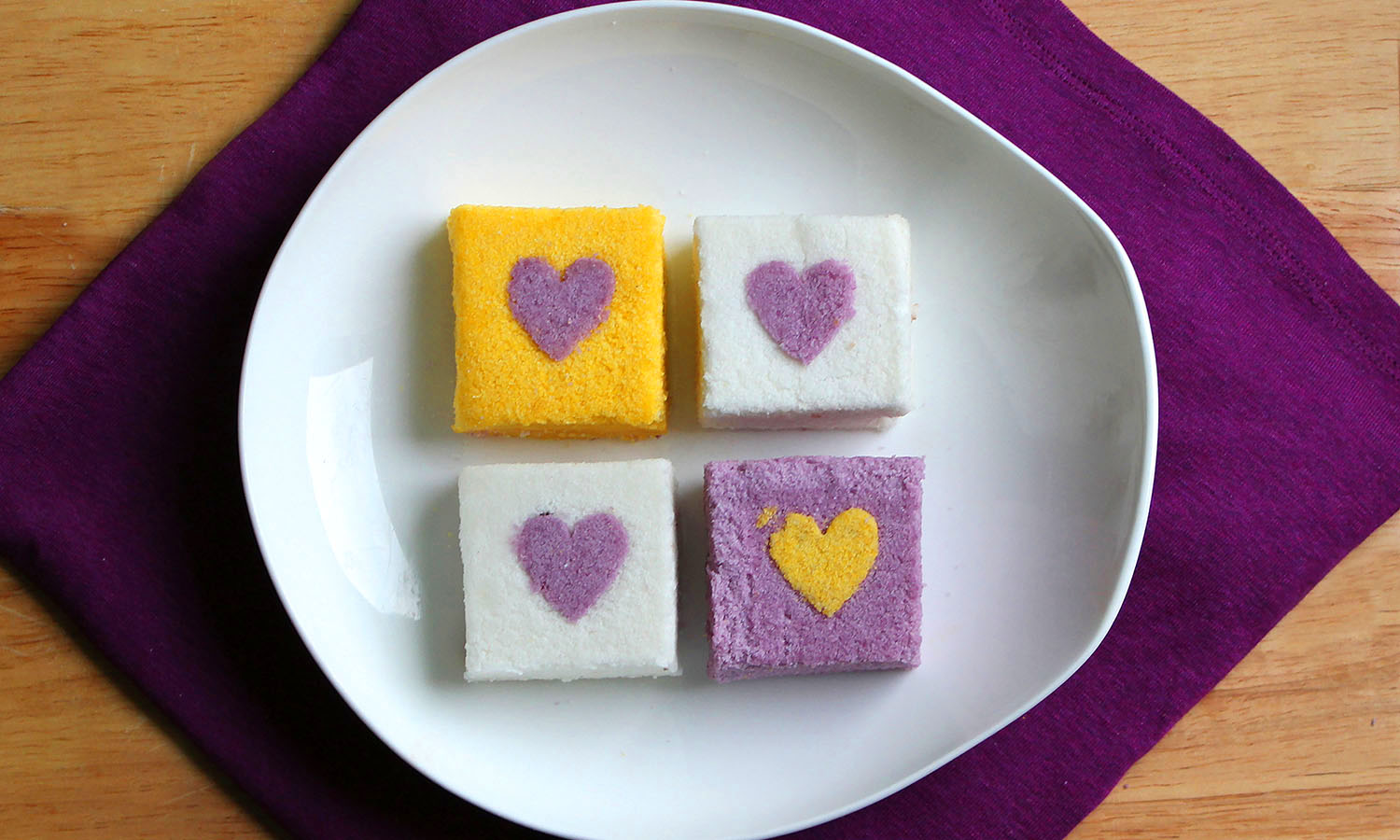South Korea
South Korea
Learn to cook sweet Korean treats
Sure enough, I find what appears to be a Parisian confectionery tucked among the fruit stands and chicken feet vendors. I ogle the rows of coloured bonbons and miniature cakes. There are pastel circles dipped in coconut, tiny flowers coated in jelly, white half-moons with delicate green stripes. Unlike your typical sweet treat, it’s all made of rice.
Tteok is traditional Korean rice cake. As ubiquitous as kimchi, it has a ceremonial weight pickled cabbage just can’t match. Tteok has been part of Korean culture for thousands of years. There are dozens of varieties to mark the journey from birth to death, each for a different life event or season.
Unlike the puffed-air frisbees I’m used to, Korean rice cake is dense and chewy. It clings to my fingers and pulls at my teeth like taffy. School children eat tteok before a big test to help the answers stick in their minds. But it’s also a celebratory food. Football-shaped songpyeon are eaten for the Chuseok holiday. White coins of garaetteok symbolise prosperity at Lunar New Year. My favourite is baekseolgi, a soft, spongy cake that celebrates a baby’s first hundred days.
Tteok used to be made in the home, but nowadays Koreans rely on tteok jibs to keep up with the revolving calendar of holidays. These specialty shops range from hole-in-the-wall kitchens to glossy storefronts. The cakes are made fresh to order and often include delivery. In South Korea’s convenience culture, there’s a tteok jib every few blocks.
I head to Chungju’s Munhwa neighbourhood to meet Hwe Yeong Ju, a tteok chef and jib owner. She’s been making rice cake for 20 years, and the walls of her store are lined with photos and awards. One picture shows her smiling in a white chef’s toque, another in a traditional hanbok (dress). Below the frames is a display case of specialty gift boxes.
The packages are nearly as intricate as the sweets inside.
But my translator is distracted by the window display. “Oh, so delicious,” she whispers, pointing to sesame-dusted injeolmi tteok. A popular festival treat, injeolmi is labour intensive. Its thick, sticky texture is achieved by brute force pounding. In the old days, this was done with man-sized hammers or wooden treadle machines. Just making the rice flour involved stone grinders, massive mortars and pestles, and maybe an ox.
The process was so exhausting it became communal. Extended families worked together to make enough for each household.
I ask Mrs Ju how tteok making has changed, and she leads us to the kitchen. It’s all stainless steel and white tiles. Hefty machines take the floor space, and shiny steamer baskets line the walls. Every aspect of the process is done in-house. First, rice is soaked for six hours, then ground into flour. Most people haul their rice to a miller, but Mrs Ju has her own grinders. There’s an automatic sifter, a machine for pressing injeolmi, and even one that wraps pieces like chocolate bars.
The metal worktable blooms with roses. These too are made of tteok and will decorate a chocolate rice cake. Western tastes and aesthetics have become popular in South Korea, creating demand for fusion recipes, but traditional flavours, like red bean, are still the most popular. The shimmering colours come from natural ingredients: mugwort greens, sweet potato purples, rich pumpkin yellows.
When I ask Mrs Ju about tteok’s shift from home to jib, she cites the economy. The country experienced a massive upswing between the 1960s and ’90s. Within her lifetime, South Korea went from a third- to first-world nation. Rocketing growth had an impact in the kitchen.
“As the economy developed, housewives launched into the world and got jobs,” she says. There isn’t time to make all that rice cake these days, but that isn’t the only factor. “People think making tteok is difficult,” she adds. It’s a perception she’d like to change, so she teaches a tteok cooking course at the Chungju Women’s Center. The students are locals, mostly young mothers and brides-to-be. Among them, I felt like a less-impressive version of Julia Child in France: loud, foreign and way too tall. But enthusiasm overcomes the culture barrier.
I ask one young woman why she enrolled, and the others answer for her: “To help get a husband.” “To impress her future mother-in-law.”
We’re making my favourite, baekseolgi. For a baby’s hundred day party, the cake is pristinely white, but tonight we add sweet potatoes for colour and flavour. The recipe’s surprisingly straightforward. Add potato to the rice flour, sift and steam. Mrs Ju demonstrates a batch, then turns us loose. Muggy clouds roll off our steamers, giving the air a summer closeness. We wilt, fanning ourselves with recipe cards. But our teacher walks the tables in a crisp lab coat, lifting lids, tasting, adjusting, coaching. Tteok is as much art as science.
This is especially true with our homemade rice flour – it’s hard to get the moisture right. She rubs my mix between her fingers, then sluices in more water. She has me feel it. My fingers find a texture like grated parmesan cheese. It clumps when I squeeze it, and she smiles: perfect.
We use both purple and yellow sweet potatoes. Mrs Ju has us layer the colours in the steamer basket, so it cooks in stripes. Then she gives us a pro-tip: cut the tteok before steaming for clean, perfect pieces.
Afterward, we turn our baekseolgi out onto the table. The colours are Crayola bright, and the two-tone squares look like kitchen sponges. Mrs Ju offers plastic bags so we can take our triumph home. By the end of class there’s no need. We’ve eaten it all.
Makes 1 round cake
INGREDIENTS
4 cups tteok rice flour (also called glutinous rice flour, available at Asian grocery stores)
1/2 teaspoon salt
1 sweet potato, mashed
1/4 cup caster sugar
METHOD
Line the basket of a 30-centimetre steamer with cheesecloth or baking paper.
Combine rice flour and salt in a large bowl. Rub the mashed sweet potato into the rice flour with your fingers. Sift the mixture through a wire sieve.
The resulting powder should feel coarse, like grated parmesan cheese, and clump together when squeezed. If it doesn’t, add one tablespoon of cold water at a time. Rub it into the powder until you have the right texture.
Sift the powder a second time. Sprinkle in the sugar and mix gently.
Pour the powder into your steamer basket, and smooth the top. Cut the pieces you want, so they cook with clean edges. Steam for 20 minutes and turn out onto a plate to cool.
Tteok tastes best the first day, but it also freezes well. You can substitute squash or cocoa powder for sweet potato, as long as you adjust the moisture accordingly. Spices, nuts and dried fruit are delicious additions as well.
Words Erin Bergstrom
Photos Samuel Bergstrom
Tags: food, recipe, south korea
 (
(








